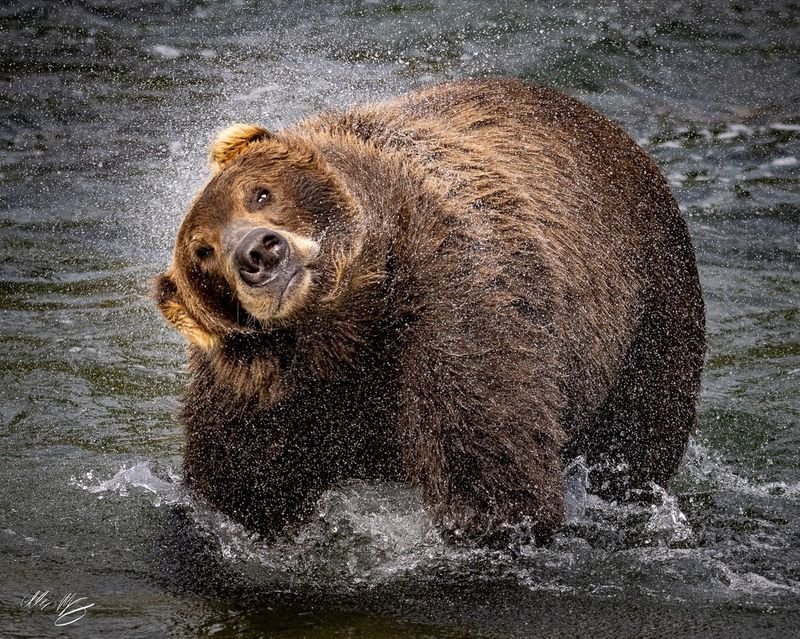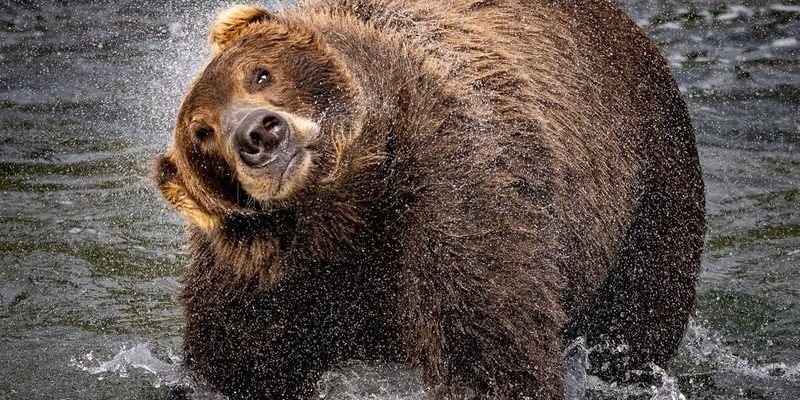
Let’s grab a metaphorical coffee together and dive into the world of grizzly bears. Just as we wouldn’t judge a friend based on hearsay, it’s crucial we take a closer look at what’s true and what’s not about these magnificent creatures. Understanding grizzlies helps us appreciate them more and fosters better wildlife management practices. After all, knowledge is power, and in this case, it’s also a step towards coexistence.
Myth 1: Grizzly Bears Are Aggressive Towards Humans
One of the biggest myths about grizzly bears is that they’re always aggressive towards humans. Honestly, while a grizzly can be dangerous, they’re not mindless monsters out for human flesh. Most bear encounters happen when they’re surprised, especially when a person is hiking or camping in their territory. Grizzlies are more likely to avoid humans than confront them.
When a grizzly feels threatened, it might bluff-charge, which can look terrifying. But usually, they’re just trying to communicate that you’re too close for comfort. Remember, they often prefer to retreat rather than engage. It’s essential to make noise while hiking and to stay alert—this gives bears the chance to avoid you altogether.
Myth 2: Grizzly Bears Are All Big and Scary
You might picture a grizzly bear as a hulking beast, towering over everything else in the forest. While it’s true that grizzlies can weigh up to 1,500 pounds, not all grizzly bears are gigantic. Just like humans, they come in different sizes. In fact, the average adult male weighs around 600 pounds, while females tend to be smaller at around 400 pounds.
Size can also vary depending on factors such as their habitat and availability of food. Bears in coastal areas often grow larger because of the protein-rich salmon they consume, while those in mountainous areas might be smaller due to limited food sources. So, when you hear people say all grizzlies are massive, just remember: it’s a bit more nuanced than that!
Myth 3: Grizzly Bears Are Not Intelligent
Another common misconception is that grizzly bears operate purely on instinct and lack intelligence. That couldn’t be further from the truth. Grizzlies are highly intelligent animals, capable of problem-solving and adapting to their environment. You might be wondering how intelligent they really are; let’s dive into some examples.
Grizzly bears have been observed using tools, like rolling rocks to access food, or even digging specific holes for different types of food sources. They also have terrific memories. Bears can remember locations of food sources for years, which helps them survive in the wild. It’s this intelligence that makes bear-human interactions complex and something we need to navigate carefully.
Myth 4: Grizzly Bears Are Solitary Creatures
It’s often thought that grizzly bears are lone wolves of the bear family, but that’s not entirely accurate. While they are generally solitary, especially males, they do have social behaviors that come into play during certain times of the year. For example, during the salmon spawning season, you can find multiple grizzlies gathering in the same area to fish.
Interestingly, some female grizzlies have been observed forming “mother groups,” where a few females with cubs stay close to each other. This behavior allows them to share vigilance and can help protect their young from male bears who may pose a threat. So, while grizzlies may enjoy their alone time, they’re not against a little company when it suits them.
Myth 5: All Bears Hibernate the Same Way
You might have heard that all bears hibernate in the same way, but this isn’t true for grizzlies. When winter rolls in, grizzly bears enter a state called torpor, which is slightly different from full hibernation. During this time, their heart rate drops, and they can go for months without eating, drinking, or even going to the bathroom.
Unlike other bear species, like black bears, grizzlies don’t always sleep through the entire winter. They might wake up when temperatures are milder, which allows them to hunt if food is available. What’s fascinating is that grizzlies can actually enter a deep sleep but can be roused if something disturbs them—a survival trait that’s pretty clever.
Myth 6: Grizzly Bears Are a Threat to Livestock and Pets
While it’s true that grizzly bears will sometimes raid farms for food, it’s often overstated how much of a menace they are to livestock and pets. Farmers work hard to create barriers and use techniques like electric fencing to protect their animals. Many experts believe that educating the public about bear behavior and safe practices is more effective than simply labeling them as a threat.
In reality, many grizzly bear encounters with livestock stem from improper waste management and food storage. If you’re camping in bear country, securely storing food in bear-proof containers can help prevent unwanted visits. So, rather than viewing grizzlies solely as threats, understanding their behaviors helps us coexist peacefully.
Myth 7: Grizzly Bears Are Dangerous to Their Own Kind
You might think grizzly bears are gladiators, always fighting each other for dominance. While it’s true they can be aggressive, especially during mating season or when food is scarce, most interactions between grizzlies involve a significant amount of ritualistic behavior to minimize conflict. It’s a bit like a dance—they may stand up tall, growl, or make loud sounds to assert themselves without resorting to violence.
Grizzly bears are more inclined to negotiate their territory than engage in full-blown fights. This not only helps conserve energy but also reduces the risk of injury. After all, a hurt bear is a vulnerable bear.
Grizzly bears are extraordinary creatures that inspire fascination and respect. By debunking these myths and misconceptions, we can foster better understanding and respect for these animals. They’re not mindless beasts; they’re intelligent and adaptable creatures that play a vital role in our ecosystems.
Whether you’re hiking in bear country or simply intrigued by wildlife, keep these realities in mind. Understanding grizzly bears helps us coexist peacefully, ensuring they remain a part of our natural world for generations to come. Let’s leave the myths behind and embrace the truth about these magnificent animals!

